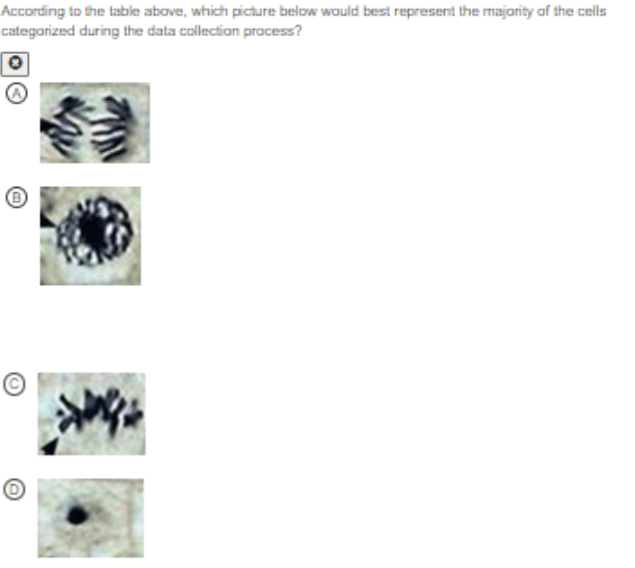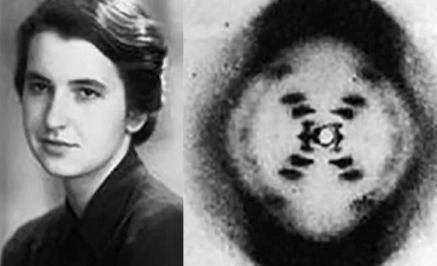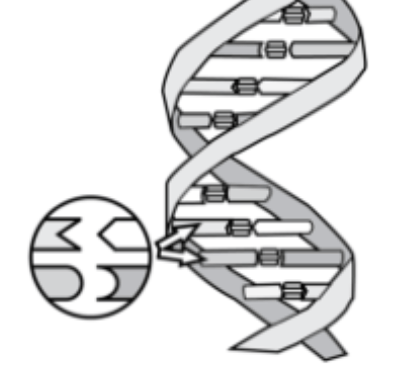Put the following events regarding normal cell division in the correct sequential order: (first at the top, last at the bottom).
-Replication of each chromosome
-alignment of duplicate chromosomes in the middle of the cell
-nuclear membrane formation around each set of newly formed chromosomes
-movement of chromosomes away from the middle
(PMAT)
1. Replication of each chromosome
2. Alignment of duplicated chromosomes in the middle of the cell
3. Movement of chromosomes away from the middle
4. Nuclear membrane formation around each set of newly formed chromosomes
When cells exit the cell cycle, they typically enter a resting phase (G0). Cancer cells don't. What happens instead?
-fail to complete S phase
-mutate during G phase
-Repeat the cell cycle continuously
-Die after completing mitosis
-repeat the cell cycle continuously
Humans have 46 chromosomes arranged into 23 pairs of chromosomes. At the end of a cell cycle, the new cells will have
-only the 23 maternal chromosomes
-92 chromosomes, as a result of doubling during the S-phase of the cell cycle
-23 pairs of chromosomes
-only 23 chromosomes, approximately half from each parent
23 pairs of chromosomes
In a DNA segment a repair enzyme would replace the following with:
5' GTA_ _ _ AA 3'
3' CAT G C A TT 5'
CGU
CTG
GCA
CGT
CGT

D
Which of the following is correct
-Gene expression is completely unaffected by temperature changes.
-Genes can be activated or repressed by specific temperatures.
-Genes can be activated or repressed by specific temperatures.
Which of the following is true ?
-a cell spends more time dividing its cytoplasm than dividing its nucleus
-a cell spends more time replicating DNA and growing than it does separating its nucleus
-a cell spends more time dividing its nucleus than dividing its cytoplasm
-a cell spends more time separating its nucleus than replicating DNA and growing
a cell spends more time replicating DNA and growing than it does separating its nucleus
CTACCG
Which one of the DNA strands shows bases that are complementary to the ones on the template strand above?
CAGCCA
GAAGGC
GATGGC
none of the above
GATGGC
DNA replication occurs in what order
-helicase unzips antiparallel strands of DNA. The separated strands will act as templates for making the new DNA
-one all the bases are matched up, DNA ligase seals the DNA back into two continuous strands. The DNA automatically winds itself back up into a DNA double helix
-enzymes assist with adding complimentary base pairs to parent strands for the leading and lagging strands, always in the 5' to 3' direction
-helicase unzips antiparallel strands of DNA. The separated strands will act as templates for making the new DNA
-enzymes assist with adding complimentary base pairs to parent strands for the leading and lagging strands, always in the 5' to 3' direction
-one all the bases are matched up, DNA ligase seals the DNA back into two continuous strands. The DNA automatically winds itself back up into a DNA double helix
This image gave the world a first look at DNA. By studying this scientists understood which of the following?

- role of DNA in protein synthesis
-sequence of DNA that makes up the human genome
-double-helix structure of DNA
-double-helix structure of DNA
DNA replication occurs in the ________ phase of the cell cycle.
-Synthesis
-Gap 1
Synthesis
Approximately what percent of time does the cell spend in mitosis?
90%
9%
10%
7%
10%
During DNA replication a chemical called ____ acts as an enzyme to quickly bond nucleotides on the complementary strand.
-Helicase
-Primase
-DNA polymerase
- Ligase
DNA polymerase
Which one explains how cancer and the cell cycle are related?
-cancer is when cells undergo the cell cycle in a slower format
-cancer is when cells complete the cell cycle unchecked causing uncontrolled cell division
-a mass of cancer is called a tumor
-cancer is when cells complete the cell cycle unchecked causing uncontrolled cell division

The arrow is representing what part of the DNA strand?
-the sugar deoxyribose and a phosphate
-genes, one from each parent
-nitrogen bases held together by a hydrogen bond
-the amino acids that will code for a protein
-nitrogen bases held together by a hydrogen bond
Mitosis ensures that ____
-each cell receives an identical copy of the DNA
-each cell receives a mutated copy of the DNA
-each cell receives 2 more identical copies of the DNA
each cell receives an identical copy of the DNA
Approximately what percent of time does the cell spend in Interphase?
90%
9%
10%
7%
90%
Which one correctly replicated the following DNA strand"
DNA: 5' ATTGCGTATCC 3'
- 3' TAACGCATAGG 5'
- 3' TAAGCGATAGG 5'
- 5' TAACGCATAGG 3'
- 5' TAAGCGATAGG 3'
3' TAACGCATAGG 5'
What causes cells to differentiate (to make different things) into specialized cells (cells that do something? The activation (to make happen) of specific ___causes cells to differentiate (to make different things) into specialized cells (cells that do something)
-hormones
-environmental cues
-genes
genes
During embryonic development, cells become distinct as the fertilized egg divides because the cells
-can clump together
-metabolize sugars rapidly
-have specific genes activated
have specific genes activated
People who have leukemia, a cancer that affects white blood cells, are often given Cytarabine. This drug inhibits the synthesis of DNA. Which phase of the cell cycle is most affected by Cytarabine?
-G1 phase
-G2 phase
-M phase
-S phase
S phase
Cancer ranks among the top causes of death worldwide. Select the possible underlying causes of this uncontrolled cell growth.
-mutations, created during the S phase, accumulate in various genes that control cell division
-cells undergo apoptosis, which is programmed cell death (the cells start dying off)
-checkpoints embedded in the cell cycle start getting overridden and/or skipped
-during the G1 phase, the cell grows too large and dies
-The M phase (mitosis) is skipped and the cell never divides
-mutations, created during the S phase, accumulate in various genes that control cell division
-checkpoints embedded in the cell cycle start getting overridden and/or skipped
-each new DNA molecule contains new single RNA strands
-each half of the original DNA molecule is joined with a new, complimentary DNA strand
-After DNA replication occurs, there is a one new DNA molecule containing both original strands, and the other new molecule contains both new strands
-each half of the original DNA molecule is joined with a new, complimentary DNA strand
Place the mitotic phases in order
1 2 3 4
3,1,4,2
True or False
Mitosis only has one division and each new daughter cell contains the same number of chromosomes as the part cell.
true